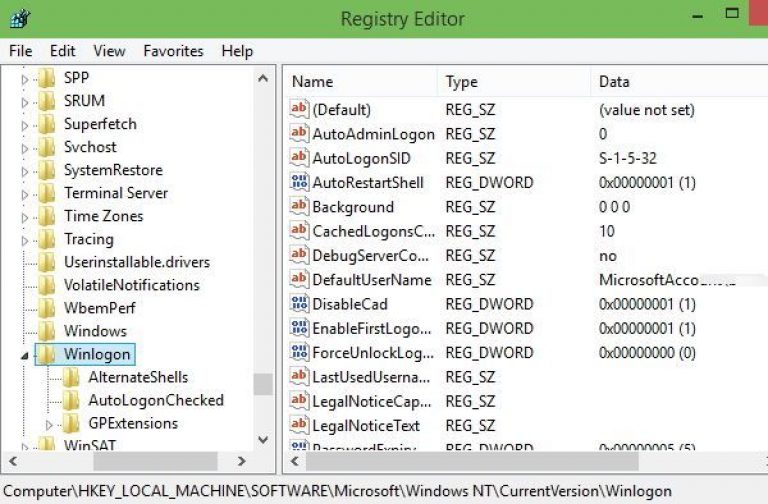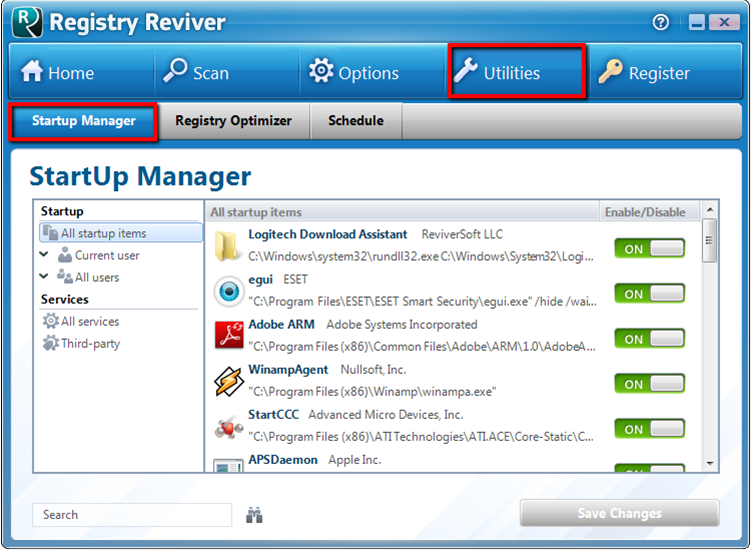-
How Do I Edit The Registry In Vista
Editing the Windows Vista Registry with Regedit. Editing the Windows Vista Registry with Regedit.
Editing the Windows Vista Registry with Regedit. Editing the Windows Vista Registry with Regedit.
When a computer is not working properly, there are situations where editing the registry is the best troubleshooting technique.

Do I need a Windows Registry cleaner? Updated: 0. 4/2. 6/2.
Complicated Fix: To disable Autorun for good in XP/Vista, you need to edit the Registry. As always, before you edit this database, it's smart to make a backup of it.
4 Tools to Decode and Convert Windows Registry Hex Values to Text 5 Ways To Backup and Restore the Windows Registry or Selected Hives 4 Ways to Edit URLs at Internet. Backup / Restore the Registry. To Backup/Restore the Windows Registry: Windows 9x For XP 2000 click here. If you are in MSDOS, at the C:\Windows prompt type.
How to Customize Command Bar in Windows 7 Explorer? Add Cut, Copy, Paste and Other Useful Buttons. UPDATE: This tutorial has been updated to provide Windows 8 style. How To Restore the Windows Registry Restoring Backed Up Registry Settings is Really Easy with Registry Editor Share Pin Email.


Computer Hope. Registry cleaners are designed to help remove invalid references in the Windows Registry which point to a resource which no longer exists on the computer. These resources may include DLLs, programs, fonts, uninstalled programs, or system information that is out of date. These references can be left behind when a program is not uninstalled properly, the uninstaller is poorly written, or the system has crashed in the past causing these invalid entries. Although these utilities can make the Windows Registry clean, the overall potential benefits are greatly outweighed by the potential harm they could cause.
We suggest users do not install or use Windows Registry cleaners on their Windows computers. Can running a Registry cleaner cause problems? Yes. Any Registry cleaner that is poorly written and removes or changes the Registry improperly can cause issues with programs. In some situations, it can cause Windows to stop working. If you do not suggest Registry cleaners what should I do? There are several things that can be done to resolve computer issues before attempting to use a Registry cleaner on your computer.
If you are experiencing issues, we suggest you try the below suggestions before resorting to a Registry cleaner. How to repair or fix the Windows Registry without a Registry cleaner. If you knew what you were trying to fix, you could open the Registry, find the Registry key and fix or delete the key manually. However, an easier and often better solution to Registry problems is to use the Windows System recovery tool to restore the Registry back to an earlier date.
System recovery is helpful if something was installed that caused problems in the Registry. Alternatively you could reinstall Windows, which would fix any bad Registry settings by overwriting entries in the Registry. What do Registry cleaners report to fix?
These programs have been known to fix one or more of the below situations. Fix errors caused after program uninstalled.
Files or shortcuts associated with uninstalled programs. Slow boot times. Overall computer response time. I still want to run a Registry cleaner, which one should I use?
If you have tried the above suggestions and are still encountering problems, there are dozens of Registry cleaners available today. Below is a list of a few of the programs we recommend. Note: When running any Registry cleaner, we always suggest using the utilities backup Registry feature first in case issues arise after the clean. Do I need to run the Registry cleaner in Safe Mode?
No. These utilities should be deleting keys that are not in use and therefore should not encounter issues if ran in Normal mode. However, if you are encountering problems that prevents you from getting into Normal mode or you get errors while in Normal mode, we suggest running them from Safe Mode. The Registry cleaner found xx amount of problems, now what? After Registry keys or other system settings have been found, use the utility to delete or clean those keys.
Often you need to select all found items and click a clean or delete button. After running a Registry cleaner my computer or programs no longer works. If you are encountering new problems after running a Registry cleaner, boot the computer into Safe Mode if Normal mode does not work and run the utility to restore the backup made. If you did not make a backup of the Registry, try using the Windows System Restore feature.
-
Commentaires
